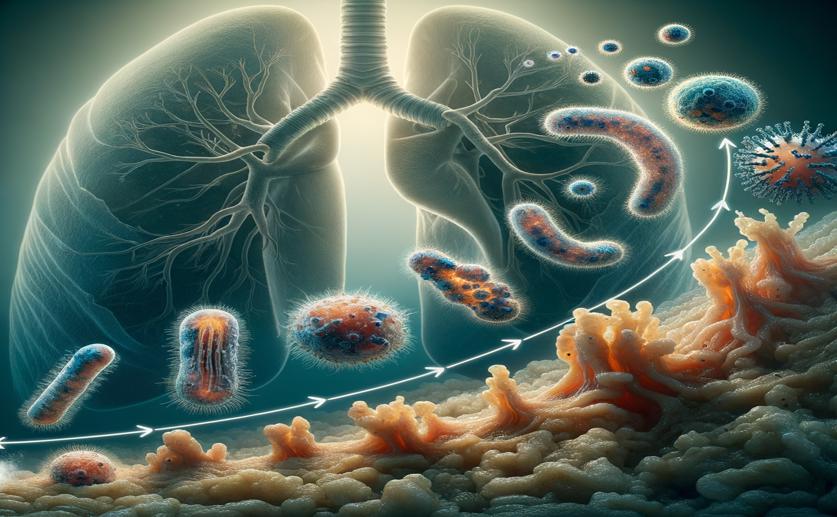
How Lung Infection Microbes Change Over Time
Jenn Hoskins
25th March, 2024

Image Source: Natural Science News, 2024
Key Findings
- Study at Northumbria University shows CF patients' lungs have stable "chronic" and variable "intermittent" bacteria
- Stable bacteria spread similarly across lungs, worsening adult lung function
- Variable bacteria, influenced by random changes, correlate with better adult lung function
References
Main Study
1) Ecological patterns and processes of temporal turnover within lung infection microbiota.
Published 25th March, 2024
Journal: Microbiome
Issue: Vol 12, Issue 1, Mar 2024
Related Studies
2) Bacterial Culture Underestimates Lung Pathogen Detection and Infection Status in Cystic Fibrosis.
3) Community composition shapes microbial-specific phenotypes in a cystic fibrosis polymicrobial model system.
4) The dynamic lung microbiome in health and disease.



 15th March, 2024 | Jenn Hoskins
15th March, 2024 | Jenn Hoskins